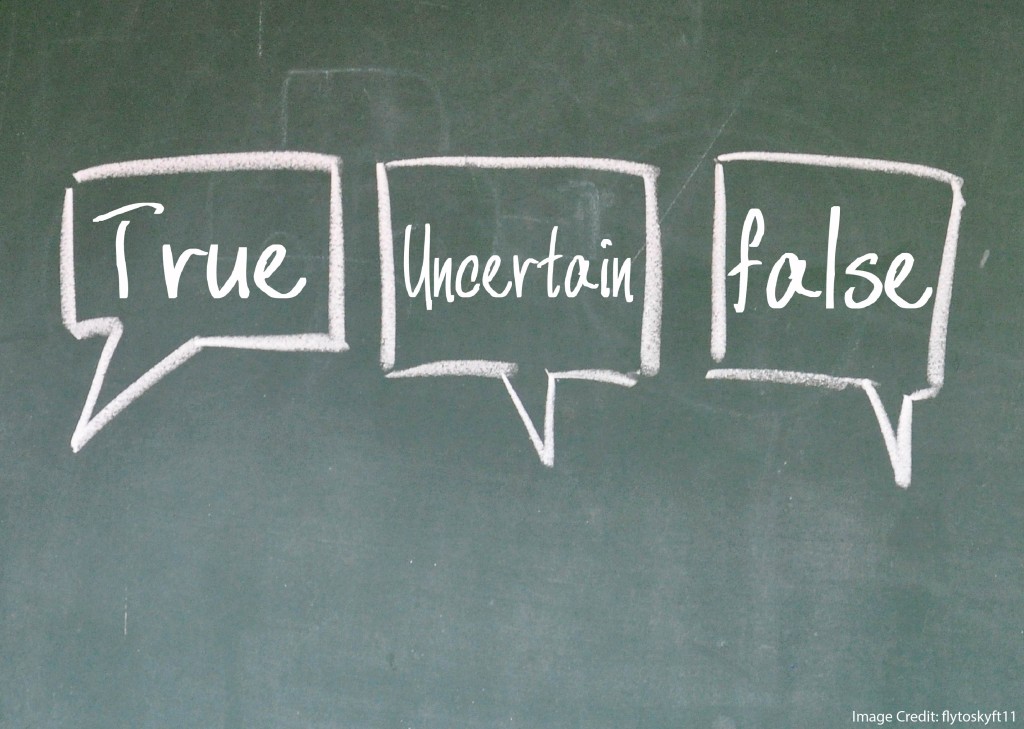
Back in the dark ages, when I was just cutting my teaching teeth, we teachers might have asked our students to review for an upcoming test by asking them to reread the chapter and their notes from class. With the benefit of psychology research, we now know that another strategy will be more effective.
Rather than have students reread the chapter or their notes, we might instead encourage them to outline the content from memory. This approach–called “the testing effect” or “active recall’ or event “blank page review”–leads to substantial increases in long-term memory formation. (That’s psychologist speak for “learning.”)
The efficacy of this form of retrieval practice is supported by a wealth of research and has been shown to be a powerful strategy for long-term learning.(1) The benefits have been shown in a variety of environments, over a wide range of student ages, and across many disciplines.(2) (3) (4)
One of the nice things about the testing effect is that it can easily be integrated into a study routine or a class lesson plan. Students can employ the strategy on their own without the use of anything more sophisticated than a blank piece of paper. Teachers can incorporate blank page review or frequent low stakes or no stakes quizzes into their courses as a way to leverage the power or retrieval practice.
Are there other effective ways in which we can incorporate retrieval practice into the classroom using current technology to not only enhance long term learning but also to provide formative assessment data for both the student and the teacher? The simple answer is YES!
“High-tech” version
Student response systems–commonly known as “clickers”–are a fantastic way to engage students in the process of retrieval practice; they also provide both teacher and student with valuable formative assessment data. Several strategies for effective use of clickers will enhance students’ learning.
- Make sure that the questions are not too easy.
- Be sure to include the most common wrong answers as options.
- After the initial polling is complete, take advantage of the different student answers to generate discussion and debate about the topic. Insist that students make a convincing argument as to why their choice is the best answer.
After initial polling on a question, I often project the results for my students to see. Depending on the spread of answers, I follow up with one of the these questions:
“Can somebody make a case for why their answer is the best choice?”
“Can somebody make a case for why their answer is a better choice than the one that was just proposed?”
“What do you need to know/remember in order to answer this particular question?”
When there is no clear consensus and wide range of answers are selected, I usually go in a different direction.
“Take a minute at your table (typically, 3-4 students) or with the person next to you to discuss your initial answer and come to a consensus. In a minute, we will re-poll on the same question.”
After a brief period of discussion and re-polling, there tends to be fewer potential answers chosen. I can then solicit an argument for one answer or another.
Don’t be afraid to include some vague wording, or to have more than one answer be correct depending on how the question is interpreted. A little intentional confusion and healthy debate/discussion can be a powerful way to incorporate an additional desirable difficulty into the mix.(5)
The feedback that occurs during the post polling discussion and analysis is not only beneficial for correcting erroneous answers; it also helps with long term retention of correct answers on which the students were not initially confident in their answer.(6) Both of these factors lead to greater long term retention ,as well as strengthened metacognitive skills for the students. A win-win!
If you do not have clickers at your disposal, you have several web-based alternatives to collect student responses. Polleverywhere, Socrative, Google forms and Kahoot! are just a few of the options that exist out there for teachers to use.
As a word of warning, there are some potential downsides and caveats that you need to consider when using student response systems. First and foremost is that no matter how much you plan ahead, you can count on the technology not working flawlessly every time. Who among us has not experienced the joy of having the projector bulb blow out just as you are about to project something on the board?
Another factor to consider is the time required. It takes longer to cover the same ground using this retrieval practice strategy. I would argue that the time is well worth it for the students, but the reality is that it will take more of your valuable class time.
“Low-tech” version
If you do not have a set of clickers or enough electronic devices in your classroom, you can still take advantage of this technique. Personal white boards, paddles, or even different colored note cards let individual students or groups of students vote for various possible answers. Any way that allows you to canvas different student responses and then to generate discussion and debate about those answers will work just as well.
Regardless of the technique used, the power of retrieval practice and feedback for long term learning is undeniable and should be an arrow in your pedagogical quiver.
References:
- Roediger, H. L., & Karpicke, J. D. (2006). The power of testing memory: Basic research and implications for educational practice. Perspectives on Psychological Science, 1(3), 181-210. Link
- Karpicke, J. D., & Blunt, J. R. (2011). Retrieval practice produces more learning than elaborative studying with concept mapping. Science, 331(6018), 772-775. Link
- Karpicke, J. D., & Roediger, H. L. (2008). The critical importance of retrieval for learning. Science, 319(5865), 966-968. Link
- Agarwal, P. K., Bain, P. M., & Chamberlain, R. W. (2012). The value of applied research: Retrieval practice improves classroom learning and recommendations from a teacher, a principal, and a scientist. Educational Psychology Review, 24(3), 437-448. Link
- Overoye, Acacia L.; Storm, Benjamin C. (2015) Harnessing the power of uncertainty to enhance learning. Translational Issues in Psychological Science, Vol 1(2), Jun 2015, 140-148. Link
- Butler, Andrew C.; Karpicke, Jeffrey D.; Roediger III, Henry L. Correcting a metacognitive error: Feedback increases retention of low-confidence correct responses. Journal of Experimental Psychology: Learning, Memory, and Cognition, Vol 34(4), Jul 2008, 918-928. Link

 About Scott MacClintic
About Scott MacClintic 




